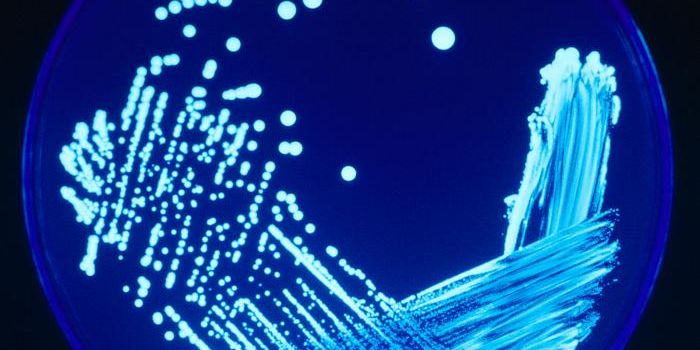Acidic Stomach Environment May Worsen Microbial Pathogenicity
Our stomachs are full of gastric acids that help us digest food. It seems plausible that it would be tough for bacteria to survive in an acidic environment like the stomach, and that germs would likely be killed there. New research reported in PLOS Pathogens has suggested, however, that the pathogenicity of bacteria may actually increase when they pass through the low pH of the digestive system.
In this study, the researchers used a common model organism that is very simple and easy to work with, but still has many things in common biologically with humans. "These wormlike animals are transparent, so we can watch things that happen inside them quite easily," explained study co-author Brian Ackley, associate professor of molecular biosciences at the University of Kansas (KU). "Using pH-sensitive chemicals developed at KU, called Kansas Reds, we were able to monitor the pH inside the digestive system and watch what happens when they eat harmful bacteria, compared to nonharmful bacteria."
C. elegans like to eat bacteria, and have a digestive tract with a pH level that's similar to humans; it's moderately acidic. When a worm consumes healthy bacteria, that pH stays acidic, but when it eats pathogenic microbes, the acidic pH of the digestive tract gets neutralized. The study utilized C. elegans that carried gene mutations that disrupted the regulation of pH in the digestive tract to learn more about whether the animals could sense whether bacteria were good or not.
"When animals had a more acidic digestive system, they were more likely to be affected by pathogenic bacteria -- again counter to what one might guess if acidity was useful in killing harmful bugs that might sneak into the body with food," Ackley said. "Our lab teams were able to show the effect on the animals was specifically due to the pH by adding a base to buffer the digestive tract. We used bicarbonate, the same agent our bodies use to neutralize stomach contents when they pass into our intestines. Neutralizing the pH in the mutant animals reverted the accelerated infection by the pathogenic bacteria."
While different kinds of animals have different reactions to pathogens, there are commonalities. "A general response involves the creation of chemicals, like hydrogen peroxide or hypochlorous acid -- AKA bleach -- near the bacteria, and then having specialized immune cells eat the dying bacteria," Ackley said. "To keep our bodies safe, the immune system only deploys these defenses when it's sure it is being invaded. The work in C. elegans may suggest a way the body can have these defenses ready to go at a moment's notice; that is, keep the chemical environment in a moderately acidic state where making those chemicals is difficult, then, upon infection, simply neutralize the environment to deploy the defenses."
C. elegans are used as a model in part because they have many genes in common with people, so this observation may be true of humans.
"Our goal is to boost this natural defense system in people as a way to either avoid or reduce the use of antibiotics," Ackley said. "Right now, our antibiotic use is unsustainable, and bacteria are evolving resistance at an alarming rate. If the system discovered in C. elegans is in fact still present in humans, it would suggest bacteria are much slower to adapt to this defensive strategy than they are to antibiotics."
Sources: AAAS/Eurekalert! via University of Kansas, PLOS Pathogens









